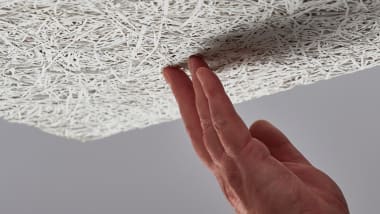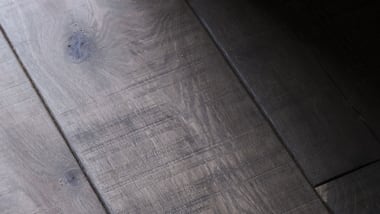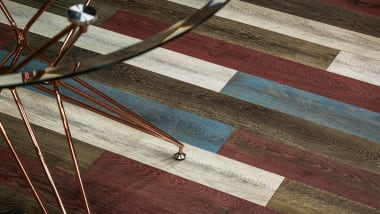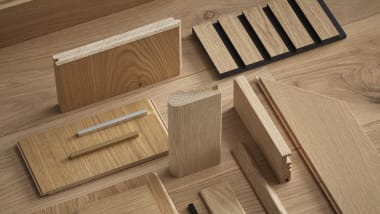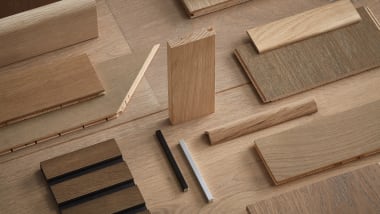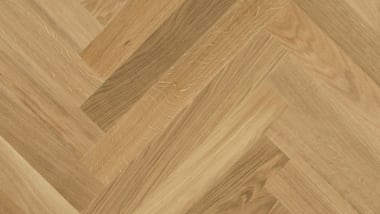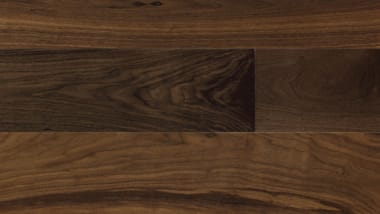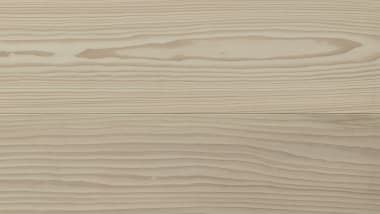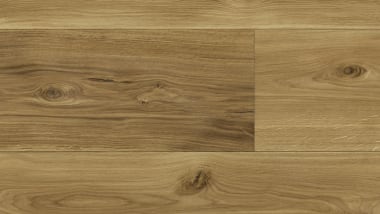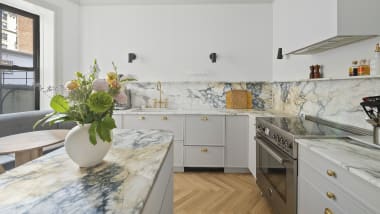Flooring Types Explained

A solid wood floor is floor laid with planks or battens which have been milled from a single piece of timber, usually a hardwood. Since wood is hydroscopic (it acquires and loses moisture from the ambient conditions around it) this potential instability effectively limits the length and width of the boards.
Solid hardwood flooring is usually cheaper than engineered timbers and damaged areas can be sanded down and refinished repeatedly, the number of timbers being limited only by the thickness of wood above the tongue. Solid hardwood floors were originally used for structural purposes, being installed perpendicular to the wooden support beams of a building (the joists or bearers) and solid construction timber is still often used for sports floors as well as most traditional wood blocks, mosaics and parquetry.

Reclaimed wood is currently generating immense interest, no doubt a combination of its intensely interesting appearance and ecologically sound credentials. But traditional sources of reclaimed timber can be a risky specification since supplies are often unreliable and the lack of uniformity makes installation a lengthier, and therefore costlier process, as well as contributing to high levels of wastage.
Havwoods’ engineered reclaimed timbers do not suffer such problems. And not only are they milled to regular sizes using 21st century production techniques, they make better use of finite resources and are so stable that they may even be fitted over underfloor heating.
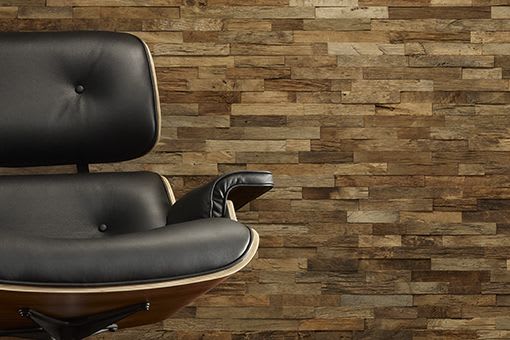
Virtually all of Havwoods’ products may be used to clad walls and ceilings, however just a few are designed specifically and solely for this purpose. Vertical is our amazing collection of timber which is designed specifically for cladding, and all of it uses reclaimed timber.

It is rare to find a solid plank wider than 140mm since the bigger the plank the greater the propensity of movement caused by changes in humidity. The advent of engineered planks has made widths of 180mm quite normal, but at Havwoods we are only happy to offer exceptionally stable planks at widths in excess of 200mm.

Parquet encompasses all the geometrical pattern flooring types including herringbone, chevrons and mosaics as well as specific patterns like Versailles. Many of these patterns are enjoying a revival, particularly herringbone patterns which use larger battens, thus giving a contemporary twist to a traditional look. Whilst many parquetry blocks are of unfinished solid timber, modern mosaics and end grain blocks are now available as mesh or board backed panels, making a once complex installation remarkably simple. Furthermore, at Havwoods a huge number of engineered herringbone and chevron blocks are available, now adding the benefit of an enormous variety of choice in shade and finish.

An engineered board is, quite simply, a timber board which consists of more than one layer. By placing each layer so that the grain runs perpendicularly it becomes virtually impossible for the timber to swell or shrink with changes in humidity and so it dramatically increases its stability. The top layer of an engineered board (the lamella) is solid wood, usually hardwood, and may be anything from 2 to 6mm thick; the thickest wear layers are equivalent to those on solid timber boards and obviously the thicker the surface layer the more times it can be sanded and refinished to remove the ravages of wear. The lamella is securely bonded to one or two further layers – this may be a multi-layered plywood or a sandwich with either a softwood or hardwood core.
Engineered boards should not be confused with laminate or veneer. Laminate uses an image of wood on its surface whilst veneer uses only a very thin layer of wood over a core of some type of composite wood product, usually fibreboard.
Engineered timber is now the most common type of wood flooring used globally. Not only are they more stable than solid planks but they also offer alternative, easier methods of installation. Furthermore the technology has enabled the production of much wider boards as well as the application of an enormous variety of really interesting finishes, reducing the demand for exotic species since their rich colors can now be simulated with the use of oils, heat and pressure.



